1) Traitement Quantique de l’Information, modèles de spins en interaction
Je m'intéresse à la description fine des espaces de Hilbert à quelques qubits (spins 1/2), en particulier des niveaux d'intrication quantique. J'utilise pour cela des outils géométriques, fibrations de Hopf de sphères de dimension élevée, ou encore la représentation de Majorana (pour les systèmes de spins symétriques). Dans ce dernier cas, avec P. Ribeiro, nous avons ouvert une voie en reliant les invariants d'intrications aux invariants classiques de transformations de Moebius.
J'ai également entrepris l'étude des anyons de Fibonacci (dans le cadre du calcul quantique topologique), avec maintenant l'intention de mieux comprendre comment l’intrication émerge des échanges entre anyons (groupe de tresse associé). 3 anyons forment un qubit, on peut commencer par tresser deux ensembles de trois anyons pour réaliser un système à deux qubits. Le problème est plus complexe, car l’espace de Hilbert associé à 6 anyons est de dimension plus grande que celle de deux qubits (problème de « leakage »). 3 anyons forment un qubit, on peut commencer par tresser deux ensembles de trois anyons pour réaliser un système à deux qubits. Le problème est plus complexe, car l’espace de Hilbert associé à 6 anyons est de dimension plus grande que celle de deux qubits (problème de « leakage »).
Je m'intéresse enfin à des problèmes de "marches quantiques", en dimension quelconque. Il s'agit d'une sorte de généralisation des marches aléatoires classiques, dans laquelle un marcheur (quantique) se déplace sur un graphe d'une façon déterminée par son état interne (la "pièce" quantique). Cet état fait l'objet d'une transformation unitaire à chaque pas de temps. On s'intéresse à la façon dont la fonction d'onde du marcheur s'étale dans le temps, en fonction de la géométrie du graphe (periodique, quasipériodique, désordonné), et de la nature de la pièce quantique.
.
2) Systèmes frustrés et désordonnés
J'ai commencé récemment une étude visant à modéliser des structures nanométriques confinées en géométrie cylindrique, pour des systèmes géométriquement frustrés. Ces structures, lorsqu’elles sont non confinées, ont fait l’objet de nombreuses études dans l’approche dite « d’espace courbe », prédisant, dans certaines conditions, des structures réelles composées d’un arrangement complexes de défauts topologiques. Or, un argument mathématique simple (lié à ce que l’on appelle la projection géodésique) suggère des configurations différentes, plus proches de l’ordre idéal non frustré, si l’on confine ces structures en environnement cylindrique. Je vais en étudier les conséquences pour des systèmes de sphères dures et des nano-fils covalents. L’apparition de défauts topologiques et la compétition avec l’ordre cristallin seront étudiées en fonction du rayon du domaine cylindrique
- Dielectric behaviour of polar liquids in the far infrared spectral range : a theory.
B. Guillot, and S. Bratos, Mol. Phys. 33, p.593 (1977). - Theoretical analysis of dielectric properties of polar liquids in the far infrared spectral range.
B. Guillot, and S. Bratos, Phys. Rev. A 16, p.424 (1977). - Comparaison des fonctions de correlation mono et multimoléculaires des liquides et des solutions.
B. Guillot, et S. Bratos, Mol. Phys. 37, p.991 (1979). - Theoretical study of spectra of depolarized light scattered from dense rare-gas fluids.
B. Guillot, S. Bratos and G. Birnbaum, Phys. Rev. A 22, p.2230 (1980). - Theory of collision induced absorption in dense rare gas mixture.
B. Guillot, S. Bratos et G. Birbaum. Mol. Phys. 44, p.1021 (1981). - Theoretical investigation and experimental detection of rattling motions in atomic and molecular fluids,
S. Bratos and. B Guillot. J. Mol. Struc. 84, p.195 (1982). - Theory of collision induced line shapes : absorption and light scattering at low density.
G. Birnbaum, B. Guillot and S. Bratos, Advances in Chemical Physics, Vol. 51, John Wiley Ed. (1982), p.49-113. - Theoretical interaction of the far infrared absorption spectrum of dense nitrogen.
B. Guillot and G. Birnbaum, J. Chem. Phys. 29, 686 (1983) - Theoretical study of the far infrared absorption spectrum in molecular liquids.
B. Guillot and G. Birnbaum, in Proceedings of the Nato Advanced Research Workshop Phenomena induced by intermolecular interactions, Ed. G. Birnbaum, Plenum Press,p. 437 (1985). - Theory of collision induced light scattering and absorption in dense rare gas fluids.
S. Bratos, B. Guillot and G. Birnbaum, ibid ref.10, p.363. - Investigation of the chemical potential by molecular dynamics simulation.
B. Guillot and Y. Guissani. Mol. Phys. 54, p.455 (1985). - Chemical potential of triatomic polar liquids: a computer simulation study .
Y. Guissani, B. Guillot and F. Sokolic, Chem. Phys. 96, p.271 (1985). - Molecular dynamics simulations of thermodynamic and structural properties of liquid
 .
.
F. Sokolic, Y. Guissani and B. Guillot, Mol. Phys. 56, p.239 (1985). - Computer simulation of liquid sulphur dioxide : comparaison of model potentials.
F. Sokolic, Y. Guissani and B. Guillot, J. Phys. Chem. 89, p.3023 (1985). - Density effects and relative diffusion in the far infrared absorption spectrum of compressed liquid nitrogen.
Ph. Marteau , J. Obriot, F. Fondere and B. Guillot, Mol. Phys. 59 (1986). - Theoretical investigation of the dip in the far infrared absorption spectrum of dense rare gas mixture.
B. Guillot, J. Chem. Phys. 87, p.1952 (1987). - The statistical theory of the ionic equilibrium of water. Basic principles and practical realization .
S. Bratos, Y. Guissani and B. Guillot, in Chemical reactivity in Liquids, ed. by M. Moreau et P. Turq, Plenum Press, p. 5850 (1988). - The statistical mechanics of the ionic equilibrium of water: A computer simulation study .
Y. Guissani, B. Guillot and S. Bratos, J. Chem. Phys. 88, p.5850 (1988). - The statistical theory of the ionic equilibrium of water. Theory and experiment ,
B. Guillot, Y. Guissani and S. Bratos, in Synergetics, order and Chaos, ed. by M.G. Velarde, World Scientific, p. 473, (1988). - Theoretical study of the three-body absorption spectrum in pure rare gas fluids,
B. Guillot, R.D. Mountain and G. Birnbaum, Mol. Phys. 64, p.747 (1988). - Far infrared absorption in nitrogen-rare gas compressed mixtures. An experimental and theoretical survey.
B. Guillot, Ph. Marteau and J. Obriot, Mol. Phys. 65, p.765 (1988). - Triplet dipoles in the absorption spectra of dense rare gas mixtures. (1) Short range interactions.
B. Guillot, R.D. Mountain and G. Birnbaum, J. Chem. Phys. 90, p.650 (1989). - Dipole moments in rare gas interactions.
M. Krauss and B. Guillot, Chem. Phys. Lett. 158, p.142 (1989). - Interaction induced absorption in simple to complex liquids,
B. Guillot and G. Birnbaum, in Reactive and Flexible Molecules in Liquids, Ed. Th. Dorfmüller, Kluwer Academic Publishers, p.1 (1989). - Structures and energetics of ion-solvent microclusters (n=1, .,8) :
 ,
,  and
and  with,
with,  ,
, 
 and
and 
B. Guillot, Y. Guissani, D. Borgis and S. Bratos, in Reactive and Flexible Molecules in Liquids, Ed. Th. Dorfmüller, Kluwer Academic Publishers, p.47 (1989). - Etude par Monte Carlo de la solvatation en phase gazeuse des ions halogénures par des molécules protiques
 et aprotiques
et aprotiques  ,
,
B. Guillot, Y. Guissani, D. Borgis et S. Bratos, dans Méthodes Théoriques en Chimie, Journal de Chimie Physique, n°/spécial SFC88, p.977 (1989). - Triplet dipoles in the absorption spectra of dense rare gas fluids. (II) Long range interactions.
B. Guillot, J. Chem. Phys. 91, p .3456 (1989). - The statistical mechanics of the ionic equilibrium of water. The force law.
S . Bratos, B. Guillot and Y. Guissani, in Static and Dynamic Properties of Liquids, ed. by M. Davidovic and A.K. Soper, Springer, Vol. 40, p.48 (1989) - Investigation of ionic solvation dynamics by far infrared spectroscopy,
B. Guillot, Ph. Marteau and J. Obriot, in Modeling of Molecular Structures and Properties, Ed. J.L. Rivail, Elsevier, p. 363 (1990). - Investigation of very fast motions in electrolytes solutions by far infrared spectroscopy,
B. Guillot, Ph. Marteau and J. Obriot, J. Chem. Phys. 93, p.6148 (1990). - Computer simulation of chemical equilibria,
B. Guillot, Y. Guissani and S. Bratos, J. Phys.: Condensed Matter 2, supp.A, p.165 (1990). - Line shapes in dense fluids ; the problem, some answers, future directions,
B. Guillot in SpectralLine Shapes, Vol 6, AIP Series, p.453 (1990). - A molecular dynamics study of the far infrared spectrum of liquid water,
B. Guillot, J. Chem. Phys. 95, p.1543 (1991). - A computer simulation study of hydrophobic hydration of rare gases and of methane. (I) Thermodynamic and structural properties.
B. Guillot, Y. Guissani, and S. Bratos, J. Chem. Phys. 95, p.3643 (1991). - Investigation of charge-transfer complexes by computer simulation. (I) Iodine in benzene solution.
Y. Danten, B. Guillot and Y. Guissani. J. Chem. Phys. 96, p.3783 (1992). - Investigation of charge-transfer complexes by computer simulation. (II) Iodine in pyridine solution,
Y. Danten, B. Guillot, and Y. Guissani., J. Chem. Phys. 96, p.3795 (1992). - Structure of liquid cyclopropane,
M.I. Cabaco, M. Besnard, M.C. Bellissent-Funel, Y. Guissani, and B. Guillot., in Molecular Liquids : New perspectives in Physics and Chemistry, J. Teixeira-Dias ed., Kluwer Academic Publishers, NATO ASI Series C. Vol 379, p. 513 (1992). - Water Solutions of non polar gases: a computer simulation.
B. Guillot, Y. Guissani and S. Bratos, Zhurnal Fizicheskoi Khimii 67, p.30 (1993"); Russian J. of Phys. Chem. 67, p.25 (1993). - A computer simulation study of the liquid-vapor coexistence curve of water.
Y. Guissani, and B. Guillot., J. chem. Phys. 98, p.8221 (1993). - A computer simulation study of the temperature dependence of the hydrophobic hydration.
B. Guillot, and Y. Guissani., J. Chem. Phys. 99, p.8075 (1993) - Temperature dependence of the solubility of non polar gases in liquids.
B. Guillot and Y. Guissani, Mol. Phys 79, p.53 (1993) - Coexisting phases and criticality in NaCl by computer simulation,
Y. Guissani, and B. Guillot, J. Chem. Phys 101, p.490 (1994). - A far infrared study of water diluted in hydrophobic solvents,
T. Tassaing, Y. Danten, M. Besnard, E. Zoidis, J. Yarwood, Y. Guissani, and B. Guillot., Mol. Phys 84, p.769 (1995). - Cancellation effects in collision-induced phenomena.
G. Birnbaum, and B. Guillot, in Collision and Interaction-Induced Spectroscopy, G.C. Tabisz and M.N. Neuman eds, Kluwer Academic Publisher, p1, (1995). - Simulation of the far infrared spectrum of liquid water and steam along the coexistence curve.
B. Guillot and Y. Guissani, in Collision and Interaction-Induced Spectroscopy , G.C. Tabisz and M.N. Neuman eds, Kluwer Academic Publisher, p.129, (1995). - Thermodynamics and structure of hydrophobic hydration by computer simulation,
B. Guillot and Y. Guissani, in proceedings of the 12th International Conference on the Properties of Water and Steam, H.J. White, Jr. J.V. Sengers, D.B. Neumann and J.C. Bellows eds, Begell House, p. 269 (1995). - Towards a theory of coexistence and critically in real molten salts.
B. Guillot, and Y. Guissani, Mol. Phys. 87, p.37 (1996). - A numerical investigation of the liquid-vapor coexistence curve of silica.
Y. Guissani and B. Guillot, J. Chem. Phys. 104, p.7633 (1996). - The solubility of rare gases in fused silica : A numerical evaluation.
B. Guillot and Y. Guissani, J. Chem. Phys. 105, 255 (1996). - Interaction-induced dipoles and polarizabilities in diverse phenomena.
G. Birnbaum, and B. Guillot, in Spectral Line Shapes, AIP Press, Vol 9, p.1 (1997). - Evidence of dimer formation in neat liquid 1,3,5-trifluorobenzene.
M.I.Cabaço, Y. Danten, M. Besnard, Y. Guissani, and B. Guillot, Chem. Phys. Lett .262, p.120 (1996). - Boson peak and high frequency modes in amorphous silica.
B. Guillot and Y. Guissani, Phys. Rev. Lett.78, p.2401 (1997). - Neutron diffraction and molecular dynamics investigations of the temperature dependence of the local ordering in liquid cyclopropane ,
M.I. Cabaço, Y. Danten, M. Besnard, Y. Guissani and B. Guillot, Mol Phys.90, p.817 (1997). - Structural studies of liquid cyclopropane : from room temperature up to supercritical conditions ,
M.I. Cabaço, Y. Danten, M. Besnard, M.C. Bellissent-Funel, Y. Guissani and B. Guillot, Mol. Phys.90, p.829 (1997). - Neutron diffraction and molecular dynamics investigation of the structural evolution of liquid cyclopropane from the melting point up to the supercritical domain,
M. Cabaço, Y. Danten, M. Besnard, M. Cl. Bellissent-Funel, Y. Guissani and B. Guillot, in proceedings of IAEA on Neutron Beam Research (Lisbonne, 1997), p. 98. - The structure of supercritical heavy water as studied by neutron diffraction,
M.C. Bellissent-Funel, T. Tassaing, H. Zhao, D. Beysens, Y. Guissani and B. Guillot, J. Chem. Phys.107, p.2942 (1997). - A molecular dynamics study of the vibrational spectra of silica polyamorphs,
B. Guillot and Y. Guissani, Mol. Sim.20, p.41 (1997). - Neutron diffraction and molecular dynamics study of liquid benzene and its fluorinated derivatives as a function of temperature.
M.I, Cabaço, Y. Danten, M . Besnard, Y. Guissani and B. Guillot J. Phys. Chem. B.101, p.6977 (1997). - The partial pair correlation functions of dense supercritical water,
T. Tassaing, M.C. Bellissent-Funel, B. Guillot and Y. Guissani, Europhysics Lett.42, p.265 (1998). - Transport of rare gases and molecular water in fused silica by molecular dynamics simulation,
Y. Guissani and B. Guillot, Mol. Phys.95, p.151 (1998). - Quantum effects in simulated water by the Feynman-Hibbs approach,
B. Guillot and Y. Guissani, J. Chem. Phys 108, p.1062 (1998). - Hydrogen-bonding in light and heavy water under normal and extreme conditions,
B. Guillot and Y. Guissani, Fluid Phase Equilibria, 150-151, p.19 (1998). - Structural investigations of liquid binary mixtures: neutron diffraction and molecular dynamics studies of benzene, hexafluorobenzene and 1,3,5-trifluorobenzene ,
M.I. Cabaço, Y. Danten, M. Besnard, Y. Guissani and B. Guillot, J. Phys. Chem.102, p.10712 (1998). - An Accurate Pair Potential for Simulated Water, by
B. Guillot, and Y. Guissani, in Steam, Water, and Hydrothermal Systems : Physics and Chemistry Meeting the Needs of Industry, Proceedings of the 13th International Conference on the Porperties of Water and Steam, Ed. P.R. Tremaine, P.G.
Hill, D.E. Irish, and P.V. Balakrishnan, (NRC Press, Ottawa, 2000). - Computer Simulation of Phase Equilibria in Molten Salts: The Case of NH4Cl ,
B. Guillot, and Y. Guissani, ibid ref. 65. - How to build a better potential for water,
B. Guillot and Y. Guissani, J. Chem.Phys. 114, p.6720 (2001). - Simulation of the liquid-liquid coexistence curve of the tetrahydrofuran + water mixture in the Gibbs ensemble,
I. Brovchenko and B. Guillot, Fluid Phase Equilibria 45/46, p.1 (2001). - Chemical reactivity and phase behaviour of NH4Cl by molecular dynamics simulations.I. Solid-solid and solid-fluid equilibria,
B. Guillot and Y. Guissani, J.Chem.Phys.116, p.2047 (2002). - Chemical reactivity and phase behaviour of NH4Cl by molecular dynamics simulations. II. The liquid-vapour coexistence curve,
Y. Guissani and B. Guillot, J. Chem. Phys.116, p.2058, (2002) - A reappraisal of what we have learnt during three decades of computer simulations on water,
B. Guillot, J. Mol. Liq. 101/1-3, p.219 (2002) - Percolation of water in aqueous solution and liquid-liquid immiscibility,
A. Oleinikova, I. Brovchenko, A. Geiger and B. Guillot, J. Chem. Phys. 117, p.3296 (2002) - Polyamorphism in low temperature water: a simulation study,
B. Guillot and Y. Guissani, J. Chem. Phys. 119, p.11740 (2003) - Investigation of vapour-deposited amorphous ice and irradiated ice by molecular dynamics simulation,
Y. Guissani and B. Guillot, J. Chem. Phys. 120, p.4366 (2004) - Breaking of Henry's law for noble gas and
 solubility in silicate melt under pressure,
solubility in silicate melt under pressure,
Ph. Sarda and B. Guillot, Nature 436, p.95 (2005) - The effect of compression on noble gas solubility in silicate melts and consequences for degassing at mid-ocean ridges,
B. Guillot and Ph. Sarda, Geochimica et Cosmochimica Acta 70, p.1215 (2006) - Simulated structural and thermal properties of glassy and liquid germania,
M. Micoulaut, Y. Guissani and B. Guillot, Phys. Rev. E 73, 031504 (2006)
présentation
Enseignement
Symmetries and quantum field theory
Physique quantique en L3
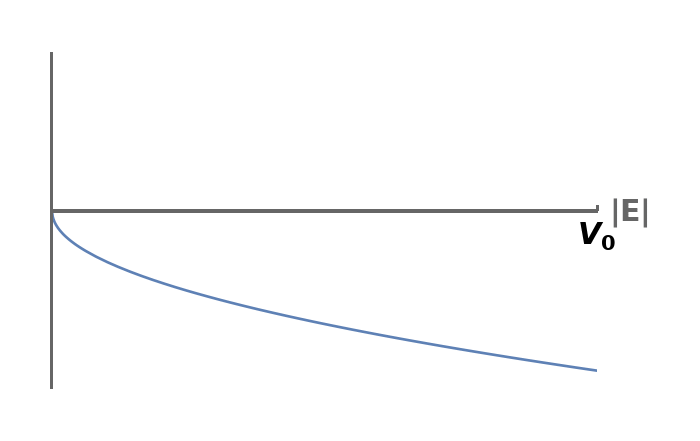
Historique
Thermodynamique à l'IST, Spécialité agroalimentaire
Introduction à la théorie quantique des champs
TD de Mécanique quantique en M1 parcours fondamental
Cours de thermodynamique à Polytech' Paris
Mathématiques pour physiciens LP206 au CNED
Théorie quantique des champs au M2 NPAC
Recherche:
Mes sujets de recherche concernent des problèmes de physique statistique décrits par des théories des champs et étudiés grâce au groupe de renormalisation. J'ai en particulier beaucoup utilisé les méthodes du groupe de renormalisation non-perturbatif. J'étudie également les propriétés de basse énergiedes théories de jauge nonabéliennes.
Thèse
CNRS researcher at LPTMC, Sorbonne Université
e-mail: aurelien (dot) grabsch (at) sorbonne-universite.fr

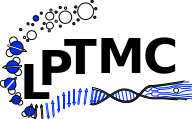

- A shortcut through the macroscopic fluctuation theory: a generalised Fick law
Théotim Berlioz, Olivier Bénichou, Aurélien Grabsch
arXiv:2509.12017 - Full stochastic dynamics of a tracer in a dense single-file system
Alexis Poncet, Aurélien Grabsch, Olivier Bénichou
arXiv:2505.21446 - Exact large-scale correlations in diffusive systems with general interactions: explicit characterisation without the Dean--Kawasaki equation
Aurélien Grabsch, Davide Venturelli, Olivier Bénichou
Phys. Rev. Lett. 135 137102 (2025)
arXiv:2504.08560 - Dynamics of soft interacting particles on a comb
Davide Venturelli, Pierre Illien, Aurélien Grabsch, Olivier Bénichou
J. Phys. A 58 215001 (2025)
arXiv:2502.16951
- Tracer and current fluctuations in driven diffusive systems
Théotim Berlioz, Olivier Bénichou, Aurélien Grabsch
Phys. Rev. Lett. 134, 247101 (2025)
arXiv:2412.14661 - Universal scale-free decay of spatial correlations in d-dimensional interacting particle systems
Davide Venturelli, Pierre Illien, Aurélien Grabsch, Olivier Bénichou
Phys. Rev. Lett. 135, 127101 (2025)
arXiv:2411.09326 - Current fluctuations in the symmetric exclusion process beyond the one-dimensional geometry
Théotim Berlioz, Davide Venturelli, Aurélien Grabsch, Olivier Bénichou
J. Stat. Mech. (2024) 113208
arXiv:2407.14317 - Semi-infinite simple exclusion process: from current fluctuations to target survival
Aurélien Grabsch, Hiroki Moriya, Kirone Mallick, Tomohiro Sasamoto, Olivier Bénichou
Phys. Rev. Lett. 133, 117102 (2024)
arXiv:2404.18481 - Tracer diffusion beyond Gaussian behavior: explicit results for general single-file systems
Aurélien Grabsch, Olivier Bénichou
Phys. Rev. Lett. 132, 217101 (2024)
arXiv:2401.13409
- Joint distribution of currents in the symmetric exclusion process
Aurélien Grabsch, Pierre Rizkallah, Olivier Bénichou
SciPost Phys. 16, 016 (2024)
arXiv:2307.02374 - From Particle Currents to Tracer Diffusion: Universal Correlation Profiles in Single-File Dynamics
Aurélien Grabsch, Théotim Berlioz, Pierre Rizkallah, Pierre Illien, Olivier Bénichou
Phys. Rev. Lett. 132, 037102 (2024)
arXiv:2306.13516 - Exact spatial correlations in single-file diffusion
Aurélien Grabsch, Pierre Rizkallah, Alexis Poncet, Pierre Illien, Olivier Bénichou
Phys. Rev. E 107, 044131 (2023)
arXiv:2302.02929
- Driven tracer in the Symmetric Exclusion Process: linear response and beyond
Aurélien Grabsch, Pierre Rizkallah, Pierre Illien, Olivier Bénichou
Phys. Rev. Lett. 130, 020402 (2023)
arXiv:2207.13079 - Duality relations in single-file diffusion
Pierre Rizkallah, Aurélien Grabsch, Pierre Illien, Olivier Bénichou
J. Stat. Mech. (2023) 013202
arXiv:2207.07549 - Exact time dependence of the cumulants of a tracer position in a dense lattice gas
Alexis Poncet, Aurélien Grabsch, Olivier Bénichou, Pierre Illien
Phys. Rev. E 105, 054139 (2022)
arXiv:2202.09278
- General truncated linear statistics for the top eigenvalues of random matrices
Aurélien Grabsch
J. Phys. A 55 124001 (2022) for the special issue Emerging Talents 2021
arXiv:2111.09004 - Exact closure and solution for spatial correlations in single-file diffusion
Aurélien Grabsch, Alexis Poncet, Pierre Rizkallah, Pierre Illien, Olivier Bénichou
Sci. Adv. 8, eabm5043 (2022)
arXiv:2110.09269 - Generalized Correlation Profiles in Single-File Systems
Alexis Poncet, Aurélien Grabsch, Pierre Illien, Olivier Bénichou
Phys. Rev. Lett. 127, 220601 (2021)
arXiv:2103.13083
- Half-integer charge injection by a Josephson junction without excess noise
F. Hassler, A. Grabsch, M.J. Pacholski, D.O. Oriekhov, O. Ovdat, I. Adagideli, C.W.J. Beenakker
Phys. Rev. B 102, 045431 (2020)
arXiv:2005.08655 - Wigner-Smith matrix, exponential functional of the matrix Brownian motion and matrix Dufresne identity
A. Grabsch, C. Texier
J. Phys. A: Math. Theor. 53 425003 (2020)
arXiv:2002.12077
- Localization landscape for Dirac fermions
G. Lemut, M. J. Pacholski, O. Ovdat, A. Grabsch, J. Tworzydło, C.W.J. Beenakker
Phys. Rev. B 101, 081405(R) (2020)
arXiv:1911.04919 - Dynamical signatures of ground-state degeneracy to discriminate against Andreev levels in a Majorana fusion experiment
Aurélien Grabsch, Yevheniia Cheipesh, Carlo W.J. Beenakker
Adv. Quantum Technol. 2019, 1900110
arXiv:1909.08335 - Distribution of the Wigner-Smith time-delay matrix for chaotic cavities with absorption and coupled Coulomb gases
Aurélien Grabsch
J. Phys. A 53(2) 025202 (2019)
arXiv:1909.01002 - Time-resolved electrical detection of chiral edge vortex braiding
I. Adagideli, F. Hassler, A. Grabsch, M. Pacholski, C.W.J. Beenakker
SciPost Phys. 8, 013 (2020)
arXiv:1907.02422 - Pfaffian formula for fermion parity fluctuations in a superconductor and application to Majorana fusion detection
Aurélien Grabsch, Yevheniia Cheipesh, Carlo W.J. Beenakker
Ann. Phys. (Berlin) 2019, 1900129
arXiv:1903.11498
- Electrical detection of the Majorana fusion rule for chiral edge vortices in a topological superconductor
Carlo W.J. Beenakker, Aurélien Grabsch, Yaroslav Herasymenko
SciPost Phys. 6, 022 (2019)
arXiv:1812.01444 - Wigner-Smith time-delay matrix in chaotic cavities with non-ideal contacts
Aurélien Grabsch, Dmitry V. Savin, Christophe Texier
J. Phys. A 51(40) 404001 (2018) (Special issue Random Matrices: the first 90 years)
arXiv:1804.09580 - Correlations of occupation numbers in the canonical ensemble and application to BEC in a 1D harmonic trap
Olivier Giraud, Aurélien Grabsch, Christophe Texier
Phys. Rev. A 97, 053615 (2018)
arXiv:1802.02555
- Fluctuations of observables for free fermions in a harmonic trap at finite temperature
Aurélien Grabsch, Satya N. Majumdar, Grégory Schehr, Christophe Texier
SciPost Phys. 4, 014 (2018)
arXiv:1711.07770 - Extremes of 2d Coulomb gas: universal intermediate deviation regime
Bertrand Lacroix-A-Chez-Toine, Aurélien Grabsch, Satya N. Majumdar, Grégory Schehr
J. Stat. Mech. (2018) 013203
arXiv:1710.06222
- Truncated linear statistics associated with the eigenvalues of random matrices II. Partial sums over proper time delays for chaotic quantum dots
Aurélien Grabsch, Satya N. Majumdar and Christophe Texier
J. Stat. Phys. 167(2) 1452–1488 (2017)
arXiv:1612.05469 - Truncated linear statistics associated with the top eigenvalues of random matrices.
Aurélien Grabsch, Satya N. Majumdar and Christophe Texier
J. Stat. Phys. 167(2), 234-259 (2017)
arXiv:1609.08296 - Distribution of spectral linear statistics on random matrices beyond the large deviation function – Wigner time delay in multichannel disordered wires.
Aurélien Grabsch and Christophe Texier
J. Phys. A 49 465002 (2016)
arXiv:1602.03370
- Topological phase transitions in the 1D multichannel Dirac equation with random mass and a random matrix model.
Aurélien Grabsch and Christophe Texier
Europhys. Lett. 116, 17004 (2016)
arXiv:1506.05322
- Capacitance and charge relaxation resistance of chaotic cavities - Joint distribution of two linear statistics in the Laguerre ensemble of random matrices.
Aurélien Grabsch and Christophe Texier
Europhys. Lett. 109, 50004 (2015)
arXiv:1407.3302
- One-dimensional disordered quantum mechanics and Sinai diffusion with random absorbers.
Aurélien Grabsch, Christophe Texier and Yves Tourigny
J. Stat. Phys. 155(2), 237-276 (2014)
arXiv:1310.6519
Keywords: statistical physics, interacting particle systems, stochastic processes, large deviations, condensed matter theory, random matrix theory, topology in condensed matter, Majorana zero modes, disordered systems
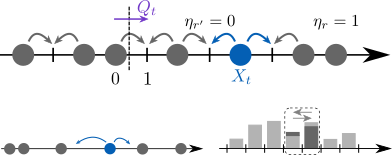 |
I am interested in the physics of single-file systems. These are systems in which particles cannot bypass each other. Following the dynamics of a tracer particle, we observe a subdiffusive behaviour, which originates from strong bath-tracer correlations. Focusing on paradigmatic models of single-file diffusion, such as the Simple Exclusion Process (SEP), I use analytical tools (master equations, large deviations, ...) to characterise the bath-tracer correlations. In turn, the knowledge of these correlations allow to fully characterise the dynamics of the tracer particle. |
 |
From the study of these paradigmatic models, I aim to obtain general laws that apply to more general or realistic models, including driven systems, arbitrary interactions or different geometries. |
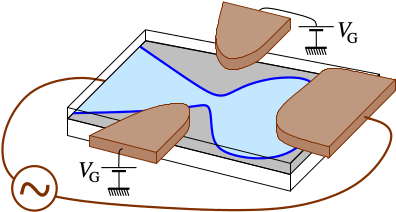 |
I am also interested in the applications of random matrix theory (RMT) to statistical physics, and in particular to quantum transport. For instance, the complex dynamics of chaotic cavities, like quantum dots, can be well described by a statistical approach. This consists in taking a random scattering matrix to characterize transport through the system. Many relevant physical quantities (like conductance, resistance,...) can be expressed in terms of the eigenvalues of the scattering matrix, or related matrices. |
 |
During my first postdoc, I worked on topological properties of condensed matter systems. Topological superconductors can support Majorana zero-modes (midgap states bound to a defect). These zero modes have non-Abelian statistics: they are neither bosons nor fermions, and can be used for the realisation of topologically protected quantum computations. Topological superconductors also possess non-Abelian excitations of the chiral edge modes: the edge vortices. Unlike the Majorana zero-modes which are fixed, the edge vortices have the advantage of propagating along the chiral edge modes. I am investigating the possibility to demonstrate the non-Abelian nature of the edge vortices, and their possible use for the realisation of topologically protected quantum computations. |
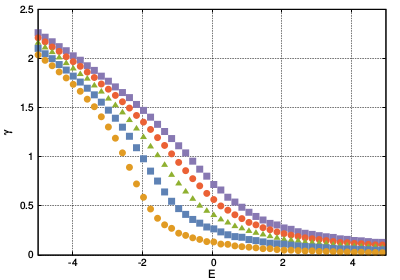 |
I am also interested in disordered systems. It is well known that wave functions in 1D in a random potential are localized (Anderson localization). The localization length have been computed for diverse models of disorder. However the 2D case is still out of reach. I mostly focus on models of multichannel disordered wires which describe an intermediate situation, using matrix Langevin equations. |
- Since 2022: CNRS researcher (chargé de recherche) at LPTMC
- 2020-2022: Postdoc at LPTMC, Sorbonne Université (Paris)
With Olivier Bénichou
- 2018-2020: Postdoc at the Lorentz Institute for theoretical physics (Leiden, Netherlands)
In the group of Carlo Beenakker
- PhD Thesis (defended in 2018): Random Matrix Theory in Statistical Physics: Quantum Scattering and Disordered Systems
Under the supervision of Christophe Texier and Satya Majumdar
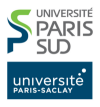
Enseignements à Sorbonne Université :
- TD+TP de Mécanique Physique (L1), 2023-
Enseignements à l'Université Paris-Sud :
- Cours-TD de physique quantique (L3), 2015-2018
- L3 physique et applications Site du cours
- TD Programmation et données numériques (M1), 2015-2017
- M1 physique appliquée Site du cours





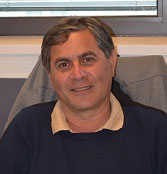
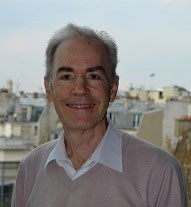
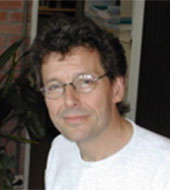
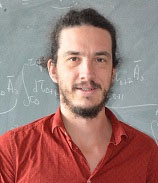
 orcid.org/0000-0003-4316-5190
orcid.org/0000-0003-4316-5190